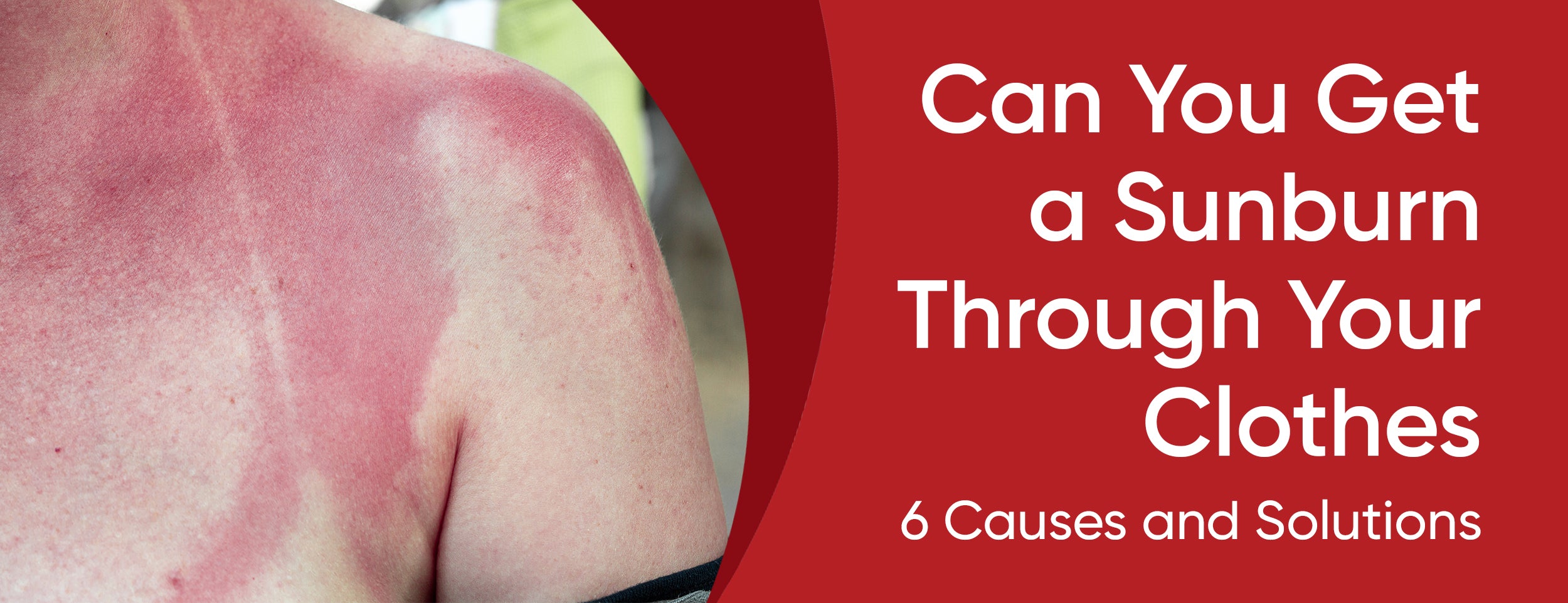Sunburn rash, also known as sun allergy, is a skin condition that affects people sensitive to sun exposure. This skin problem typically appears as an itchy red rash that develops on areas of the skin exposed to the sun.
Most sun rashes will resolve on their own within 10-14 days. Over-the-counter aloe vera or anti-itch ointments can be helpful. Cool compresses or a cool bath can provide itch relief. If you have blisters, keep them clean and dry to help to prevent infection.
This blog post will discuss sun rash treatment, including the causes, symptoms, different types of sun rash, and ways to minimize the risk of getting sun rashes. We will also review the various available options for treatment, including medical and home remedies.
Medical Sunburn Rash Treatment: 4 Methods

When the sun rash is particularly severe or causing significant discomfort, medical treatment options can play a pivotal role in easing the symptoms and expediting the healing process. Healthcare professionals and dermatologists often recommend these interventions:
Topical Steroids
Topical corticosteroids are a standard prescription for sun rash treatment due to their anti-inflammatory properties. These creams or ointments can help reduce redness, swelling, and itching associated with the rash.
Antihistamines
Antihistamines, available over-the-counter or as prescribed by a healthcare provider, can effectively counteract allergic reactions and alleviate itching. They work by blocking histamine, a chemical that triggers allergic responses.
Systemic Steroids
A doctor might prescribe severe sun rash or systemic corticosteroids. These medications are taken orally or through injections and have a broader anti-inflammatory effect on the entire body.
Immunosuppressants
Immunosuppressant drugs can be considered for persistent or severe sun rashes that do not respond well to other treatments. These medications help suppress the immune system's overactive response, contributing to inflammation.

Sunburn Rash Home Remedies: 4 Ways to Treat it
Several home remedies can provide comfort and relief from sun rash symptoms. These remedies can often be conveniently prepared and applied at home:
Cool Compresses
Applying cool, damp cloths or compresses to the affected areas can help soothe the skin, reduce inflammation, and alleviate discomfort.
Aloe Vera
Known for its soothing and cooling properties, aloe vera gel can be applied directly to the rash. It helps moisturize the skin and provides relief from itching and burning sensations.
Oatmeal Baths

Adding colloidal oatmeal to lukewarm bathwater and soaking in it for 15-20 minutes can provide gentle relief for irritated skin. Oatmeal is renowned for its anti-inflammatory and skin-soothing properties.
Calamine Lotion
Calamine lotion is a classic remedy for various skin irritations, including sun rashes. It creates a protective barrier on the skin, reduces itching, and helps dry out oozing blisters.
Precautions to Minimize Sun Rash: Shielding Your Skin
Sunburn rash is not only uncomfortable but also preventable with proper precautions. You can significantly reduce the risk of developing this painful condition by taking proactive steps to safeguard your skin from excessive sun exposure. We'll explore essential measures to incorporate into your routine to prevent sun rash:
Use Sunscreen
Applying sunscreen is a fundamental practice that forms the cornerstone of sunburn rash prevention. Here's what you need to know:
Broad-Spectrum Protection: Opt for a sunscreen that offers UVA and UVB protection.
SPF Selection: Choose a sunscreen with a minimum SPF of 30 for adequate coverage.
Generous Application: Apply much to all exposed skin areas, even on cloudy days.
Reapplication: Reapply every two hours and after swimming or sweating.
Vulnerable Areas: Pay special attention to ears, nose, lips, and the back of your neck.

Wear Protective Clothing
Suitable clothing can serve as an effective barrier against harmful UV rays. Consider these clothing choices:
Long Sleeves and Pants: Choose lightweight, long-sleeved shirts and pants.
Tightly Woven Fabrics: Opt for fabrics with a tight weave for better UV protection.
Wide-brimmed Hat: Wear a hat with broad brim to shield your face, ears, and neck.
Sunglasses: Protect your eyes from UV radiation with sunglasses that block 100% of UVA and UVB rays.
Avoid Peak Sun Hours
Minimizing sun exposure during the most intense hours can significantly reduce your risk of sunburn rash:
10 AM to 4 PM: Avoid outdoor activities during these peak sun hours.
Seek Shade: Stay in the shade to reduce direct sun exposure.
Plan Activities Wisely: Schedule outdoor activities for early morning or late afternoon.
Stay Hydrated
Staying hydrated is essential for overall health and can also contribute to sun rash prevention:
Drink Water: Drink plenty of water throughout the day, even without feeling thirsty.
Electrolyte Balance: Consider sports drinks to maintain electrolyte balance on hot days.
Moisturize: Apply a moisturizing lotion to keep your skin hydrated from the outside.
The Types of Sun Rash: Varieties and Spread
Sunburn rash makes it critical to know what types there are and how they spread. Here are some types of sun rash and how they spread:
Polymorphic Light Eruption (PLE)

Characteristics: Red, itchy bumps or patches that resemble hives or eczema.
Spread: Commonly appears on the arms, chest, and legs.
Onset: Typically occurs hours to a few days after sun exposure.
Frequency: Often seen in individuals with sun-sensitive skin.
Solar Urticaria
Nature: Presents as hives or welts upon sun exposure.
Spread: This can occur on any part of the body exposed to sunlight.
Timing: Hives develop within minutes of sun exposure and disappear relatively quickly.
Severity: Ranges from mild to severe, sometimes accompanied by other symptoms.
Actinic Prurigo
Features: Inflammatory reaction resembling eczema or dermatitis.
Spread: Affects sun-exposed areas, particularly the face and extremities.
Pattern: Often chronic and recurring, triggered by sun exposure.
Longevity: Can persist for weeks and sometimes even longer.
Photo-allergic Eruption
Description: Allergic reaction resulting in an itchy, red rash with distinct edges.
Spread: Primarily occurs in sun-exposed areas.
Cause: Often triggered by a combination of sunlight and specific substances like medications or cosmetics.
Complexity: Requires medical evaluation to identify the triggering substance.
Hydroa Vacciniforme
Traits: Clusters of fluid-filled blisters that resemble chickenpox.
Spread: Affects exposed skin areas, including the face, arms, and hands.
Timing: Blisters appear within hours of sun exposure and may leave scars as they heal.
Common in Children: Frequently observed in children and adolescents.
The Causes & Symptoms of Sunburn Rash
The common condition of sunburn rash is caused by excessive sun exposure. Let's explore the causes and symptoms of the situation.
Causes of Sun Rash
While the exact causes of sunburn rash are not fully understood, several potential triggers contribute to developing this condition.
Genetics

Genetics plays a significant role in the development of sunburn rash. People with a family history of this skin problem are more likely to develop it themselves, as they may inherit the same genes that cause it. Additionally, certain genetic traits can make the skin more sensitive to UV radiation, making it more susceptible to sunburn rash.
Medications
Certain medications can increase the risk of sunburn rash. For example, antibiotics, antifungals, and diuretics increase sensitivity to the sun's UV rays, leading to inflammation. If you are taking any of these medications, you must talk to your doctor about the potential risks of sun exposure.
Allergies
People with allergies are more likely to develop sunburn rash. This is because the immune system reacts to the sun's UV rays like foreign invaders, triggering an allergic response. Common allergens that can trigger sunburn rash include fragrances, preservatives, and certain metals.
Skin Type
Individuals with fair skin are more susceptible to sunburn rash. This is because fair skin contains less melanin, which is the pigment that protects against UV rays. People with fair skin should take extra precautions to prevent sunburn and avoid exposure during peak hours.

Symptoms of Sun Rash
Red and itchy rashes: Sun rash appears as red, patchy, and itchy bumps on the skin. They usually show up a few hours after sun exposure and could worsen with time.
Clusters of blisters or tiny bumps: In severe cases, sun rash can lead to small blister-like spots on the skin's surface. They may be filled with clear or yellow fluid and could rupture if scratched.
Burning sensation on some areas of the skin: Sun rash can also cause a burning sensation on body parts exposed to the sun. This can be painful and uncomfortable, making it challenging to enjoy outdoor activities.
Rough patches of skin: After the rash has subsided, some people may notice rough patches of skin in the affected areas. These areas may also be discolored, making them stand out from the rest of the skin.
Burning, itching, redness, bumps: Sun rash symptoms can vary from person to person, but the most common ones include burning itching, redness, and blemishes. If you notice any of these symptoms after spending time under the sun, it's crucial to seek treatment to prevent further damage to your skin.
Conclusion
Sun rash is a joint skin irritation caused by prolonged exposure to the sun. The symptoms can range from rashes to bumps and burning sensations, depending on the type of sun rash. There are effective treatments available to get relief from the discomfort of sun rash.
By taking necessary precautions and following proper sun protection methods, we can enjoy the sun without worrying about developing any adverse skin conditions. Always remember, prevention is better than cure.












![How to Cover Sunburn With Makeup: 15 Ideas [Easy Solutions]](http://drnumb.com/cdn/shop/articles/How_to_Cover_Sunburn_With_Makeup__15_Ideas_Easy_Solutions.jpg?v=1705581434)


